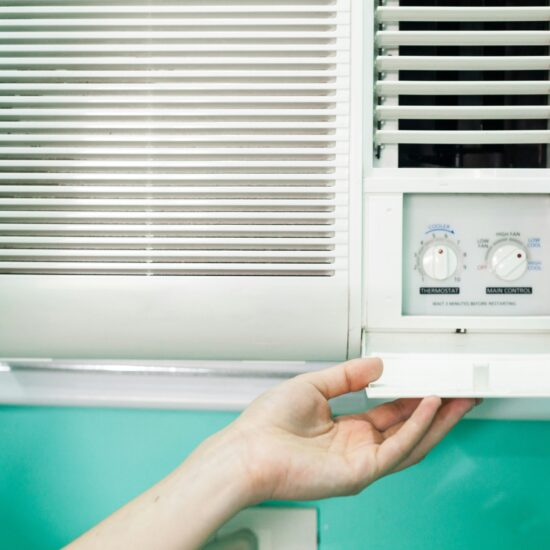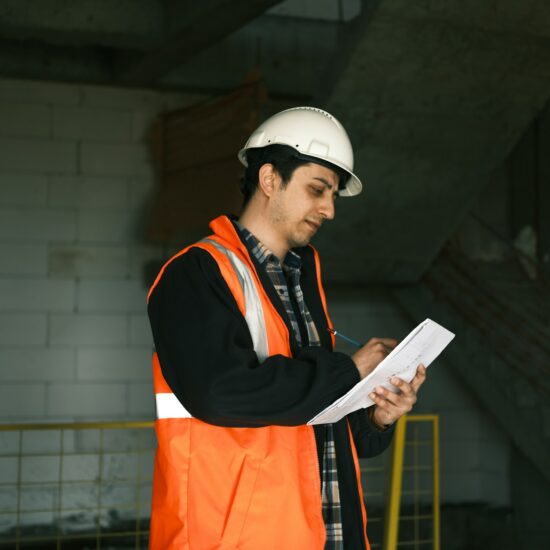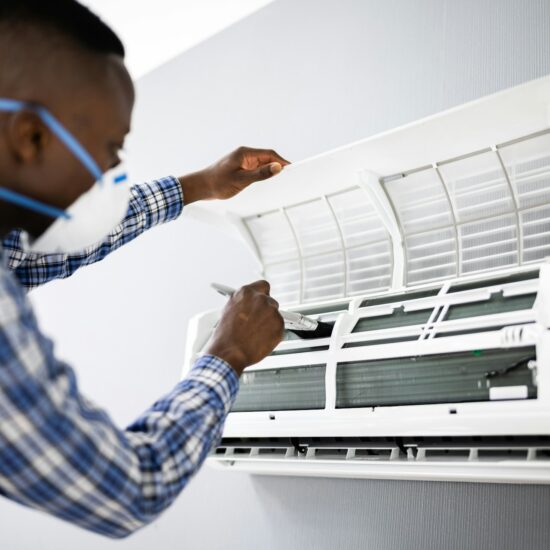When considering an upgrade or replacement of your HVAC system, the financial aspect can be a significant factor. There are several HVAC financing plans available that can help you manage the costs associated with purchasing and installing a new system. Whether you're looking for a loan with competitive interest rates or a flexible line of credit, understanding your financing options is the key to making an informed decision that aligns with your budget and home comfort needs.
Financing an HVAC system for your residential property means navigating through various products like loans and lines of credit. Each of these options comes with its own set of terms and conditions, such as repayment periods, interest rates, and borrowing limits. Choosing the right financial solution requires a careful assessment of your financial situation, alongside the consideration of the long-term savings that an efficient HVAC system can offer through reduced energy bills.
Read about HVAC financing options here.
Lenders may offer different advantages, like quick approval processes or the absence of prepayment penalties, which can contribute to the overall appeal of their financing solutions for HVAC equipment. When moving forward, it's crucial to weigh these features against your financial capacity to ensure that the financing option you choose not only allows you to proceed with installation immediately but also fits into your long-term financial planning.
Understanding HVAC Systems
When considering financing options for your home, it's essential to understand the different types of HVAC systems available and how they operate. This knowledge will guide your investment decisions.Types of HVAC Systems
- Split systems: The most common residential HVAC system, consisting of an outdoor unit with a compressor and condenser, and an indoor unit with an evaporator coil and blower.
- Heat pumps: Functioning for both heating and cooling, these systems move heat from cool indoors to the warm outside during the summer, and the opposite during the winter.
- Packaged systems: Contain the evaporator, condenser, and compressor in one unit, often located on a roof or near the foundation; ideal for homes with limited indoor space.
- Ductless mini-splits: Individual units and blowers for separate rooms, eliminating the need for an extensive duct system and providing direct airflow to designated areas.
Components and Functionality
Your HVAC system is comprised of several key components, each playing a vital role in maintaining your home's climate:- Thermostat: The control center of your HVAC, allowing you to set your desired temperature.
- Furnace: Warms air which is then distributed throughout your home.
- Air Conditioner: Works by passing air over a cold coil, removing humidity and cooling your home.
- Ductwork: The network of tubes that transports warm or cool air to various parts of your home.
- Vents: The points where the air is expelled into your rooms.
- Air Filter: Captures dust, pollen, and other airborne particles to improve indoor air quality.
The Importance of HVAC Financing
Financing your HVAC system is a strategic method to manage the cost associated with heating, ventilation, and air conditioning systems for your home. It provides a means to obtain essential comfort without a financial burden of a lump-sum payment.Benefits of HVAC Financing
- Flexible Payment Options: HVAC financing provides various payment plans, allowing you to choose terms that suit your budget. This flexibility can make a significant home improvement project more accessible.
- Preservation of Savings: By opting for financing, you retain your savings for emergencies instead of spending a large sum upfront on your HVAC system.
Assessing Financial Necessity
- Evaluating the Cost: A new HVAC system can be a substantial investment ranging from $8,000 to $25,000. Financing allows you to spread this cost over time, making it easier to handle.
- Understanding Your Credit Options: You may have access to a personal loan, home equity loan, HELOC, or dealer financing, all of which can help mitigate the immediate financial impact. It's vital to understand the terms and conditions of each to find the best option for you.
Financing Options for HVAC
When considering the installation or replacement of an HVAC system, financing can make this essential home improvement manageable for your budget. Various financing options offer flexibility to find a solution that fits your financial needs.Bank Loans
Bank loans are a traditional route for financing large purchases like an HVAC system. You might obtain a secured loan, using your home as collateral, which generally offers lower interest rates. Alternatively, an unsecured loan doesn't require collateral but might come with higher interest rates.Credit Cards
Using a credit card to finance HVAC system to finance your HVAC system can be advantageous if you qualify for a 0% introductory APR offer. This allows you to pay off the balance before the promotional period ends, avoiding additional interest.Government Loans
Government loans, such as those offered by the FHA, can include energy-efficient mortgage programs that allow you to finance HVAC systems. These loans aim to promote energy efficiency, often providing favorable terms.Personal Loans
Personal loans are a flexible option as they typically do not require collateral and can offer fixed interest rates. These loans can cover the entire cost of your HVAC system and are based on creditworthiness.Affordable HVAC Financing
We offer financing options for the services our company will provide for your home. These are the benefits of financing through us:- Monthly payments to fit your budget
- Special terms and promotions
- Online account management and bill payment options
Eligibility and Requirements
When considering financing for your HVAC system, your credit score, proof of income, and property ownership status are essential factors. These elements determine whether you qualify for a loan and the terms you may receive.Credit Score Considerations
Your credit score is a pivotal factor in determining eligibility for HVAC financing. Typically, a higher score may afford you more favorable loan terms. Before applying, you should check your credit report for any discrepancies that may impact your score.- Good Credit (670 – 739)
- Possible loan approval
- Moderate interest rates
- Very Good to Excellent Credit (740 and above)
- Higher likelihood of approval
- Competitive interest rates
Income Verification
Lenders will request documentation of your income to ensure that you can manage the monthly payments. Common forms of verification include:- Recent pay stubs
- Tax returns from the last two years
- Bank statements
Property Ownership
Proof of property ownership is required to secure financing for an HVAC system. This assures the lender that the investment is tied to a tangible asset. You'll need to provide:- Mortgage statements
- Deed or title documents
The Impact of Financing on Property Value
When you opt for HVAC financing, you're not just improving comfort in your home; you're potentially increasing its market value and making it more appealing to future buyers.Increased Home Value
Financing your HVAC system can lead to a direct increase in your property's value. By enabling the installation of a new, energy-efficient system, your home's marketability improves since modern equipment is highly valued in the real estate market. A recent study indicates that not only does this increase your home's value, but it does so without requiring a large upfront investment from you.Attractiveness to Buyers
Buyers are often willing to pay a premium for homes with newer HVAC systems, viewing them as long-term cost-savers. The availability of financing for these systems means that you can offer a home with up-to-date infrastructure, which is a strong selling point. Homes with energy-efficient upgrades tend to sell faster than those without, as demonstrated in real estate market analyses, making your property more attractive to potential buyers.Maintenance and Warranty Considerations
When evaluating HVAC financing options, you should understand how maintenance and warranties can affect long-term costs and peace of mind.Warranty Implications
Your HVAC system's warranty often stipulates that you must conduct regular maintenance to keep it valid. Typically, manufacturers require proof of annual service checks to ensure their guarantees cover any faults. It is essential to consider the terms of the warranty when you finance an HVAC system, to avoid potential future expenses due to voided coverage.Maintenance Plans
Most HVAC financing options may include the option to add a HVAC maintenance plan. These plans usually involve scheduled inspections and tune-ups of your system, which can extend its life and improve efficiency. Some financing packages might offer discounted maintenance services, making them more economical over time. Always review the detailed breakdown of what is offered in your maintenance plan to ensure it aligns with your HVAC unit's requirements.Tax Incentives and Rebates
Investing in an HVAC system for your residential property becomes significantly more cost-effective with federal tax credits and state-specific incentives. These incentives can reduce your overall expenditure and provide a return on your investment.Federal Tax Credits
Energy Efficient Home Improvement Credit: You can claim annually for various energy property costs and select home improvements. This includes specific limits for doors, windows, and home energy audits. For more substantial upgrades such as qualified heat pumps, and biomass stoves or boilers, you can claim up to $2,000 per year with no lifetime dollar limit.State Incentives
Each state can offer additional rebates and incentives for energy-efficient home improvements that vary widely depending on where you live.- Check local programs for extra savings opportunities
- Review state-specific incentives that can stack with federal credits
- Funding can be substantial, as evidenced by federal investments in state programs
Environmental Considerations
When considering HVAC financing for residential properties, understanding the environmental impact is critical. Your choices can significantly influence energy consumption and sustainability.Energy Efficiency and Sustainability
Investing in an energy-efficient HVAC system can lower your utility bills and contribute to a healthier environment. Financing programs that support these upgrades often prioritize systems with higher Seasonal Energy Efficiency Ratios (SEER) and Energy Star ratings, ensuring that you're installing technology that uses less energy to provide the same level of comfort. For example, an Energy Efficiency Financing Program can be a pathway to making these sustainable choices more affordable.Choosing Eco-friendly Systems
Selecting an eco-friendly HVAC system is not just about energy efficiency; it's also about the system's overall environmental footprint. Consider systems that use refrigerants with a low Global Warming Potential (GWP) and have features such as programmable thermostats for better temperature management. Systems that contribute to improved indoor air quality with minimal impact on the outdoor environment reflect a responsible choice. HVAC options are evolving, and assessing the market for the most appropriate eco-friendly products is an essential step in your decision-making process. When exploring options for financing your HVAC system, it’s important to be well-informed and to compare different financial products that are available to you.- Research thoroughly on the HVAC models, their efficiency, and prices.
- Assess your budget to determine what you can afford monthly.
- Compare financing plans.




